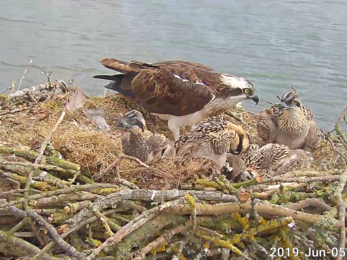Late last night – at 22.58 – the Rutland Osprey Project celebrated a major milestone and welcomed its 150th chick into the world.
The Rutland Osprey Project has pioneered the reintroduction of ospreys, a magnificent bird of prey, back into England where they had been extinct for over 150 years. The partnership between Leicestershire and Rutland Wildlife Trust and Anglian Water has successfully restored a population to the skies of central England.
Ospreys were wiped out in England by persecution – through egg-collection and taxidermy – and by habitat loss. They ceased to be a breeding species in England in the 1840s even though they had once been widely distributed across areas such as the Fens which had good breeding and feeding habitat for these spectacular fish-eating birds.
Between 1996 and 2001, 64 six-week-old Scottish ospreys were released at Rutland Water reservoir in England’s smallest county. The first translocated osprey returned to breed at its adopted home in 2001 and the number of breeding pairs has gradually increased since then. There are now 25 ospreys in total in the area and eight breeding pairs among them.
Maya and her mate, ‘33’, who gave birth to the 150th chick have been breeding together at Manton Bay since 2015, and in that time have successfully reared 10 chicks. Maya was the first osprey to return to Rutland Water this season, arriving two days later than in 2018, on 14th March. ‘33’ took his time, returning uncharacteristically later than usual on 23rd March. The first egg was laid on 2nd April. In total, four eggs were laid and both parents have been incubating feverishly, fishing and preening for the incubation period, which usually lasts 35-37 days. Their third chick to hatch this year brings the total so far to 150 chicks.



